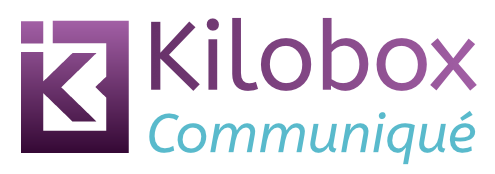
I wish my intranet matched my ideals. I wish I could tell you that since taking over the company intranet a year ago I’ve revamped, redesigned and redeveloped it. The truth is that while I know, for the most part, where our intranet should be going, I’m unable to take it there due to budget and technology constraints.
I have brought:
- Clearer navigation;
- Images and photos;
- Colour;
- Footers;
- Image maps (navigation aids);
- Larger font-size; and
- simple things like sub-headings and paragraph breaks!
I’ve managed these small improvements because I’ve brought so many best practice ideas with me, and I can hand code in XHTML and CSS.
I recognise that our intranet system needs replacing. The limitations are very, well, odd. The limitations, purposefully designed into the system by the software vendor, actually hamper good intranet design, adherence to standards and good communication.
But there’s more I can do, even if I feel I’m fighting the system.
Things you can improve without starting from scratch
In my little list above you’ve seen how I focused on good writing and page design in my first year. Every important page (news, section front page etc.) needs an image of some kind; “barely relevant” is better than no imagery.
Whatever state your intranet is in, however old and sprawling and however antiquated the system, you can improve the following:
- Drop-down navigation menus – intranets should be designed around the end users’ needs, around tasks, not departmental sections. Use the Card Sorting method with half a dozen non-expert users to help you group pages, find themes and develop your navigation headings.
- Individual page layout – at least your news stories should have some flow to them, rather than presenting the reader with a block of text. People read in an F pattern, so use plenty of sub-headings and front load your paragraphs with key words, not introductory ramblings. Get some photographs into the body of the text, have the photos right-aligned so your text flows around them. You can occasionally align them on the left.
- Improve your headlines – news story headlines can either be witty and intriguing or specific and detailed. Don’t use whatever headline the author gave you; they won’t have spent any time thinking it through.
- Get keywords into page titles – when desperately browsing through menus, or scanning search results, people are looking for words that match their expectations. Don’t call your salary pages ‘Reward’ if everyone thinks of it as ‘Pay’ – duh. Load your section titles, page titles and even sub-headings with key words and noun phrases. Be specific.
- Provide alternative navigation aids – don’t rely on the main menus only; make use of left-hand navigation lists and the footer of each page. Help people get back to the top of the page, back to the section home, back to the actual home page, and to other related pages.
- Improve how you present Word, PowerPoint and PDFs – don’t simply link to them!
- Improve how you present email addresses – don’t simply link someone’s name to their address!
Can you help me reach ten? Please leave your ‘easy fix’ in the comments.
If you found this article inspiring in any way (please leave a comment!) you might like to check:
[Wedge]If you would like to share or tweet this article, the short URL is: http://kilobox.net/1202/
Photo credit: www.lumaxart.com







I like your ‘zero cost’ approach
Some things you could add:
1) use a consistent set of icons for links to frequently used areas (e.g. expenses, travel, room booking). People can scan images much more quickly than words. Having a consistent set will make the intranet look smarter too.
2) Add ‘author’ or ‘contact’ and ‘last updated’ fields to each page. Ideally make it mandatory in the template.
3) Run some focus groups or an online survey (ideally both!). Find out what content your employees would like to see and add it. Find out what they value most and make sure its easy to get to.
Cheers
Sam
Hello Sam, thanks for stopping by.
Icons are a good idea, although they take skill to design / select. Getting them wrong can confuse people, just think of all the icons we have to digest on a daily basis – can everyone tell the difference between ‘My Computer’ and ‘My Network’ on Windows? Still, with care, I think icons are a great idea. I certainly use ‘identifiers’ already to quickly show which department ‘owns’ a page, which gives an idea of the page theme.
I’ve had to put author and original publish date into the footer of my intranet pages by hand. Def a necessary improvement (add the meta-data that makes sense to you and yours).
Ah, your third idea needs some care, Content is king, but don’t directly ask people ‘what they want’ as they don’t know! Instead, find out what their job entails, what slows them down on a daily basis, then build content, navigation and functionality around their needs (task based, user centred design), see “Don’t Ask” at: http://www.steptwo.com.au/papers/kmc_needsanalysis
Well yes, all one-line ideas like this need some qualification – including your original 7!
However, on the 3rd idea, I do think you can have a reasonable conversation with users about content requirements. That’s different from asking what new functionality they would like to see as this requires deeper insight into what intranets can do (the primary point of Step Two’s post).
If you want further qualification on how to do this, see also my own blog post last year http://www.intranetlife.com/intranet_benchmarking_for/2008/11/are-your-users.html)
Cheers
Sam